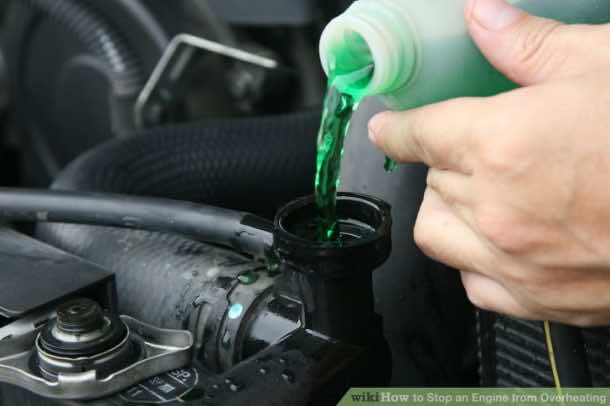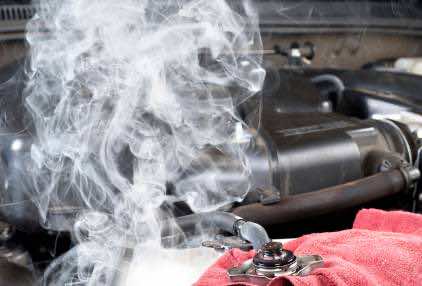When the sweltering hot summers finally come, everyone and everything starts feeling the heat. Even more so on the roads with the cranky hot-heads shouting at each other, vicious honking on the signals and people ready to have fist cuffs at the slightest of invitation. But what really blows one’s steam (pun intended) is your cars getting heated up and breaking down when the mercury levels really starts to swell. Although we don’t have much of a solution for the ill-tempered; we do have some tips on what to do when your car starts to make trouble. Below are 6 must do things when your car starts to heat up.
1) Never forget to carry an extra bottle of coolant / antifreeze in your car. Also keeping bottles of water etc. may also come in handy. Just make it a rule to buy a couple of extra coolant bottles whenever you go shopping for it. Engines overheat usually due to low coolant levels, hence filling it if your car heats up will most probably solve the problem.
2) If your car’s temperature gauge is creeping into the red zone or your car is showing a warning/danger notification, immediately turn off the air conditioner. Your AC causes the engine to do additional work and puts a lot of strain on it. Roll the windows down if you need to cool off.

3) If still the car is not cooling off, switch your fan’s temperature to hot and crank it up to the maximum speed. Sure this will make the rest of your drive one HELL of a ride (literally), but can save your engine from bursting into flames or seizing up.

4) If all above things fail, then there is no alternative then to pull over and turn off your car’s engine. Pop the hood up, only if you are sure that the hood and the clip is not too hot to handle. But if you are slightly unsure don’t open the hood at all, especially if you see steam wafting off the engine. It usually takes up to 30 minutes for an engine to cool down, and it is not sane to open it beforehand.
5) Once the engine has cooled off, check the coolant levels in the coolant bottle attached to the radiator. If it is empty this means your radiator is also running low/empty and most probably you have got a leak (assuming that you do check your coolant levels every once in a while). A quick look under your car and you might be able to see some water dripping off, confirming the earlier suspicions.
6) Now after establishing that your radiator or water body has some sort of a leak, open the radiator after cooling off your engine. You can pour some water over the radiator from outside before opening it (if you have that much in spare); this will help in cooling your water body off. Use a cloth over the radiator cap in order to protect your hand, and keep a pressurized hold over it in case the water or steam (what’s left of it) is still boiling. Tilt the cap away from your body as you open it. Now check the coolant levels in the radiator and start refilling it with the coolant or water.

NOTE: Never pour cold water into a hot radiator, as it very well can block the engine and crack it up due to the sudden change in temperature. If you really need to add water while the engine is hot, start your engine and put your car in neutral/park before doing so.
If you open the radiator cap and the coolant tank is full or close to it, this might mean that the problem lies somewhere else. It can very well be some complex electrical or mechanical problem, or simply a bummed out water pipe. It can be a faulty temperature gauge, worn or broken fan belt or bad water pump etc; and in all of these cases, you should tow your car to the nearest repair shop before causing any more damage.
We hope you found our article informative and helpful.
Have you had any problems with overheating cars before? How did you react? Comment below!


